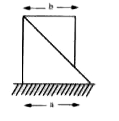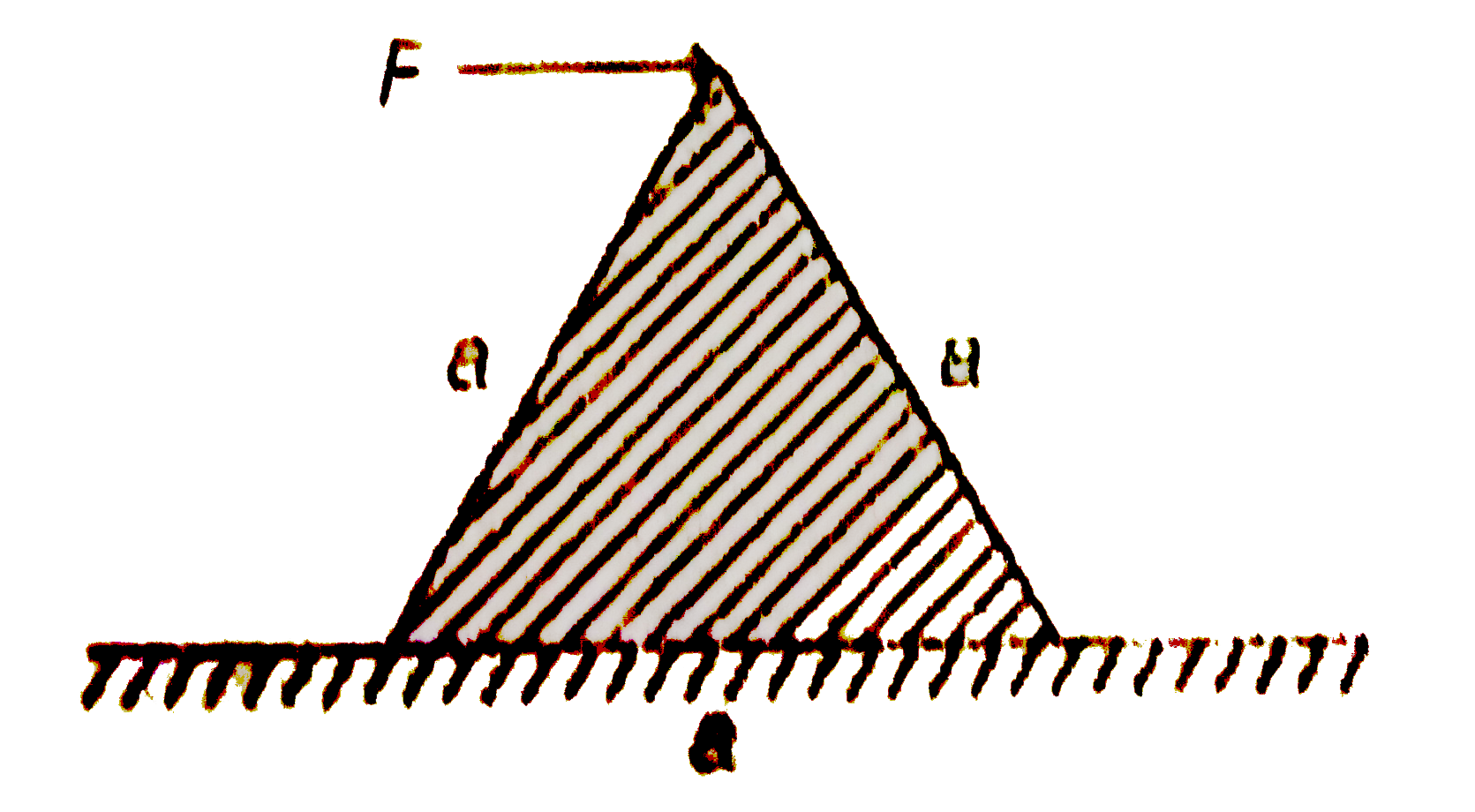A heavy body slides without friction down a triangular prism as shown in Fig.. The prism lies on a horizontal plane and can move over it without friction. In the first case the prism is held stationary in the second it is free to move. Will the velocity of the body be the same in both cases when it reaches the bottom if it starts out from the same height?
In the second case the velocity of the body will be smaller since the store of potential energy possessed by the body at the height h is converted in the first case entirely into the kinetic energy of the body and in the second case into the kinetic energy of the body and the prism simultaneously.
Related Solutions
A heavy mass m slides down a triangular prism of mass M . The prism lies on a horizontal surface and can move along it without friction . What will be the direction of motion of m if the inclination of the hypotenuse of the prism is with the horizontal ?
View SolutionTwo smooth prisms of similar right-triangular sections are arranged on a smooth horizontal plane as shown in figure. The lower prism has a mass eta times the upper prism. The prisms are held in an initial position as shown and are then released. As the upper prism touches the horizontal plane, the distance moved b y the lower prism is
View SolutionTwo smooth prisms of similar right-triangular sections are arranged on a smooth horizontal plane as shown in figure. The lower prism has a mass eta times the upper prism. The prisms are held in an initial position as shown and are then released. As the upper prism touches the horizontal plane, the distance moved by the lower prism is
View SolutionTwo smooth prisms of similar right-triangular sections are arranged on a smooth horizontal plane as shown in figure. The lower prism has a mass eta times the upper prism. The prisms are held in an initial position as shown and are then released. As the upper prism touches the horizontal plane, the distance moved b y the lower prism is
View SolutionTwo smooth and similar right angled prisms are arranged on a smooth horizontal plane as shown in the figure. The lower prism has a mass '3' times the upper prism. The prisms are held in an initial position as shown and are then released. As the upper prism touches the horizontal plane, the distance moved by the lower prisms is

View SolutionA solid disc first rolls without slipping and then slides without rolling down the same inclined plane. The velocities in two cases at the bottom are in the ratio of
View SolutionWhen a body rolls without sliding up an inclined plane the frictional force is :
View SolutionWhen a body rolls without sliding up an inclined plane the frictional force is :
View SolutionWhat is the angle of a prism? What is its value in case of an equilateral triangular prism?
View SolutionA circular disc first rolls without slpping and then slides without rolling down the same inclined plane. The ratio of velocities of the disc at the bottom of the plane in both the cases respectively is
View SolutionA circular disc first rolls without slipping and then slides without rolling down the same inclined plane. The ratio of velocities of the disc at the bottom of the plane in both the cases repectively is
View SolutionA body of mass 'm' slides down a smooth inclined plane having an inclination of 45^(@) with the horizontal. It takes 2s to reach the bottom. If the body is placed on a similar plane having coefficient friction 0.5, The time taken for it to reach the bottom is
View SolutionA body of mass 'm' slides down a smooth inclined plane having an inclination of 45^(@) with the horizontal. It takes 2S to reach the bottom. If the body is placed on a similar plane having coefficient friction 0.5, The time taken for it to reach the bottom is
View Solutionएक पिण्ड घर्षण रहित क्षैतिज समतल पर गतिमान है। क्या निम्न दशाओं में उस पर कोई बल कार्य कर रहा है ? कारण सहित उत्तर दीजिये जबकि पिण्ड (i) समान वेग से गतिमान है, (ii) समान चाल से गतिमान है।
View SolutionAn equilateral prism of mass m rests on a rough horizontal surface with ceefficeinet of friction |t. A horizontal force F is applied on the prism as shown. If the coefficeient of friction is sufficiently high so that the prism does not slide before toppling, the minimum force required to topple the prism is:

View SolutionAn equilateral prism of mass m rests on a rough horizontal surface with cofficent of friction mu . A horizontal force F is applied on the prism as shown in the figure. If the cofficent of the friction is sufficently high so that the prism does not slide before toppling, then the minimum force required to topple the prism is
View SolutionAn equilateral prism of mass m rests on a rough horizontal surface with coefficient of friction mu . A horizontal force F is applied on the prism as shown in the figure. If the coefficient of friction is sufficiently high so that the prism does not slide before toppling, then the minimum force required to topple the prism is -
View SolutionAn equilateral prism of mass m rests on a rough horizontal surface with cofficent of friction mu . A horizontal force F is applied on the prism as shown in the figure. If the cofficent of the friction is sufficently high so that the prism does not slide before toppling, then the minimum force required to topple the prism is
View SolutionAn equilateral prism of mass m rests on a rough horizontal surface with cofficent of friction . A horizontal force F is applied on the prism as shown in the figure. If the cofficent of the friction is sufficently high so that the prism does not slide before toppling, then the minimum force required to topple the prism is

View SolutionAn equilateral prism of mass m rests on a rough horizontal surface with coefficient of friction mu . A horizontal force F is applied on the top of prism as shown in figure. If the coefficient of friction is sufficiently high so that the prism does not slide before topping, the minimum force required to topple the prism is
View Solution